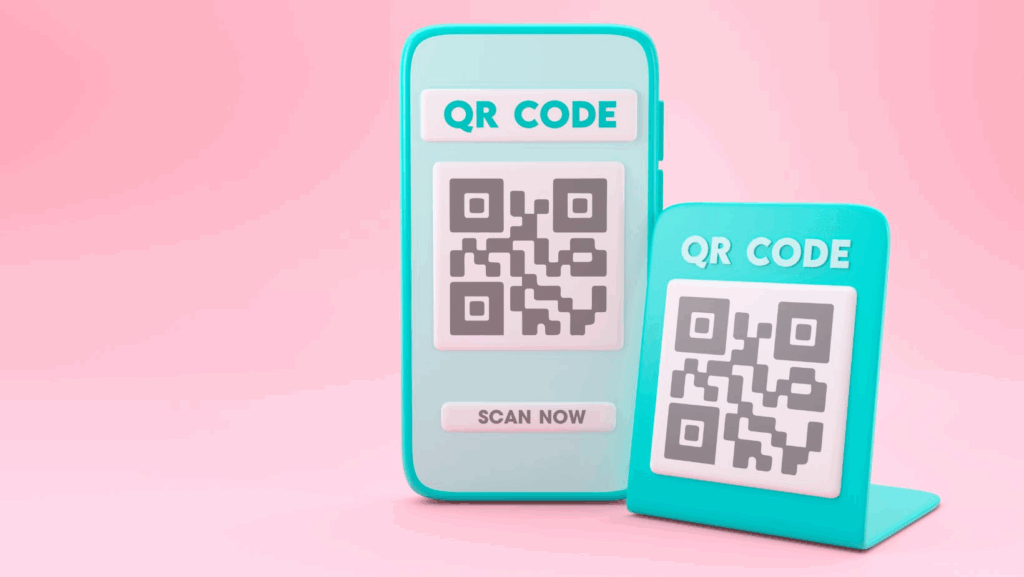Trust, convenience, and security have long defined the relationship consumers hold with financial services.
However, as digital transformation drives the industry forward, banks and insurance companies must meet new demands for faster, more convenient services, while ensuring that customer data is always protected. An unexpected solution to this dilemma? The QR code for finance. Financial services companies are integrating QR codes for banking and insurance login portals, payment methods, paperless customer onboarding, and more at different stages of the customer journey, allowing consumers to enjoy both security and convenience.
A Seamless Entry Point for Payments
Mobile payments are growing like a weed in the garden. Global transaction value of digital payments is projected to exceed $10 trillion in 2024, and will continue growing annually after that. QR codes are a key element in this spike. Besides plastic cards and physical bank tokens, they remove any latency in payment processing. By a simple scan of a mobile phone, transactions can take place. For consumers, it eliminates any disturbances. For the financial and insurance sector, it reduces the need for expensive payment gateway setups.
QR-based payments, from small peer-to-peer exchanges to large bill payments, are fast becoming the norm. China and India are the new standards, and the Western market is not trailing behind. Leading with fintech apps and contactless banking, growth rates are only increasing by the day.
Strengthening Security with QR Authentication
Safeguarding transactions means everything for the financial sector. Customers must have peace of mind that their accounts and personal information are beyond protection. These days, it’s more common to see multi-factor authentications that include QR codes instead of solely recommending users maintain their safety and wait with their fingers crossed in the hopes that passwords or SMS verification codes aren’t targeted for theft during email exchanges.
With one such instance involving a patron browsing online banking from their computer, scanning a QR code presented on their screen with their mobile banking app, only a registered device is permitted access and is further secured from fraudulent activity. Disheartening news predicts cybercrime-related costs rising as high as $10.5 trillion on an annual basis before 2025; therefore, a balance of convenient yet safe service tools, such as QR authenticators, is critical to the success of the financial sector.
From Paperwork to Paperless Onboarding
Insurance firms and banks are famous for employing loads of paperwork. But QR codes are helping to reduce that, too. With a QR code on a brochure or in a download, a new customer can access digital onboarding forms, upload ID, or chat with a customer service representative. This reduces processing time, saves on printing costs, and improves overall customer satisfaction.
In fact, many insurers include QR codes on their policy documents today, allowing customers to instantly access policy coverage details, claim forms, or renewal options, without having to pick up the phone to call an agent.
Building Customer Engagement Beyond Transactions
QR codes are not just directly useful, but also a great way to engage your customers. With them, financial companies can lead clients to financial literacy content, investment opportunities, or reward programs. For instance, if a bank customer scans a QR code in the bank branch, it might open a video on understanding different mortgage loans or making retirement plans.

By doing so, banks and insurance companies position themselves as financial educators or someone who accompanies their customers throughout the financial process. This definitely increases long-term customer trust and loyalty.
Industry-Wide Impact and the Road Ahead
Historically, the finance and insurance industry has been labeled as quite slow in terms of tech adaptation. But it seems it’ll be near impossible for an industry to brush off the flexibility that QR codes have shown — and how they can be used in highly regulated industries with current consumer technology. More specifically, the existing low-cost requirement needed by consumers can only facilitate the user demand in institutions that require protocols for both security & easy customer use.
In the future — if QR codes are combined with a blockchain-based verification or AI tech fraud detection, or could even be combined with biometric authentication — then QR codes will not only become the most secure protocol but also the most convenient and widely adopted protocol within finance.
Scanning Toward a More Secure Future
The financial industry is undergoing a digital shift where convenience, speed, and security are non-negotiable. QR codes sit right at the center of this transformation. By simplifying payments, reinforcing security, digitizing paperwork, and enriching customer engagement, they are shaping how banks and insurers interact with their clients.
For institutions navigating the challenges of trust and technology, the QR code isn’t just a tool — it’s a competitive advantage that connects innovation with customer confidence.

